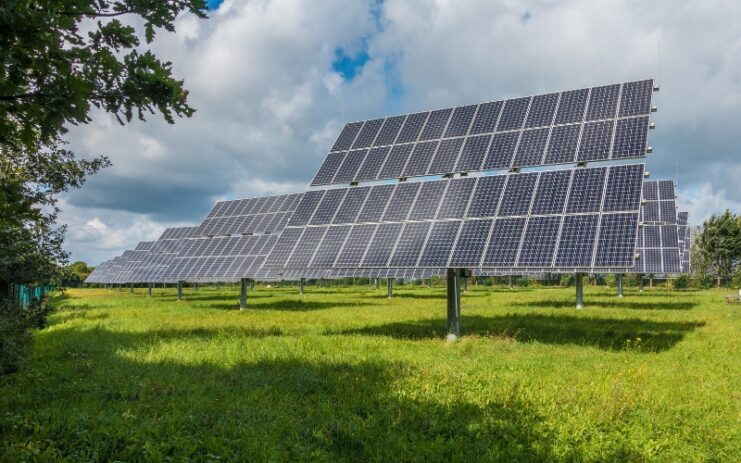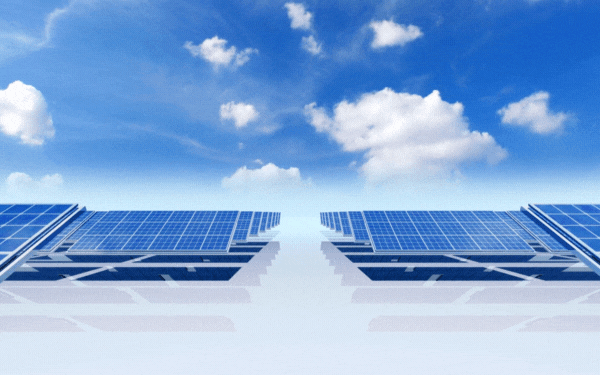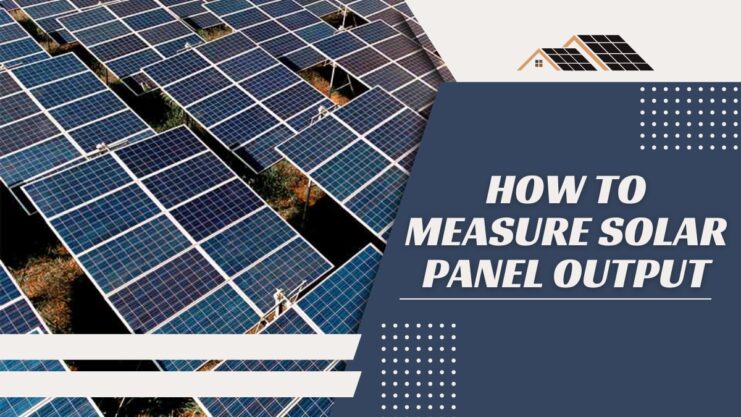Solar Panels have been widely used for the past few years because of their efficient and renewable nature. The latest technologies have made solar energy more easily accessible to people. Apart from being an eco-friendly step, using solar electricity also reduces the power expenses of a household or a firm significantly.
Over time, the production of solar panels has risen drastically, and more and more environment-conscious homeowners have turned to use solar electricity in their daily lives. However, if one is new to this, he/she must know everything about a solar panel, its functions, outputs, and how to measure the solar panel output.
Solar Panel: How Does It Work?

In simple words, a solar panel is a gadget that turns sunlight into electricity. They are made up of photovoltaic (PV) cells that convert solar energy into electric current for household or business uses. The PV cells are placed between semi-conducting materials to produce a photoelectric effect.
This generates current that can be used to produce electricity. Solar panels produce Direct Current (DC). Next, this current is passed through inverters to convert them into Altering Current (AC). This altering current is used by the building where the solar panels have been attached.
Solar Panel Output
The solar panel output refers to the amount of electricity one panel can produce. This output is measured by the number of watts generated by the panels. The pricing of the entire system depends upon the output generated by the panels within a solar system.
A higher wattage means a more significant amount of electricity produced. Generally, residential solar panels give a power output between 250 and 400 watts.
However, a panel’s output depends on its size and ability to convert solar energy into electricity. For instance, two panels may have a rating of 15% efficiency. Yet, the output of one panel could be 250 watts, and 300 watts for the other. This could be due to the larger size of the second panel or because it has been made using more advanced technologies.
Measuring The Output Of A Solar Panel

Generally, the output of a solar panel is mentioned by the manufacturer. However, one might still want to check the output themselves. They can follow these five simple steps to get the accurate amperage and voltage.
Step 1: Using A Multimeter
Multimeters are required to measure the amperage and the voltage. A multimeter measures the electricity, voltage, and resistance over several value ranges. For new people, buying an auto-range multimeter is suggested for convenience.
Step 2: Ideal Conditions For Reading Solar Panel Output
A 200-watt solar panel does not mean the panel is going to produce 200 watts of electricity the whole day. Ideal weather conditions like sunlight, cloudiness, panel inclination, air temperature, etc., are essential for power generation through solar panels.
While calculating the output, one must consider all these conditions to get the correct results. A bright sunny day is ideal for taking these readings.
Step 3: Reading The Voltage Of The Solar Panel
The voltage of a solar panel can be calculated using a multimeter. Multimeters are of two types – Switched Multimeter and Auto Range Multimeter. An Auto Range Multimeter switches automatically between the ranges. For a Switched Multimeter, one must select the correct multimeter function. For example, if one measures the output of a panel with 20 volts rating, the multimeter setting should be 200 volts.
To measure the solar panel voltage, the user should set the function on the multimeter as DC Voltage. Next, the negative wire (generally black) must be attached to the port labeled as COM on the multimeter.
The positive wire (red) should be connected to the V/mA port. Now, one has to connect the wires to the panel by matching their polarities (black with black and red with red). This gives an accurate voltage reading, as the panel’s manufacturer mentioned. However, in the case of an old panel, the voltage reading might be slightly lower than the mentioned rating.
Step 4: Reading The Panel Amperage
To measure the amperage of the solar panel, the multimeter should be set to DC Amps. To prevent damage, the user must ensure that the amperage sensitivity is set to maximum. Then connect the negative wire (black) to the COM socket, and the positive wire (red) to the socket labeled 10A on the multimeter, respectively. This should give an appropriate amperage reading.
Step 5: Multiplying Both The Values
Once both voltage and amperage values have been noted, the solar panel output can be easily measured. For this, one has to multiply the two values.
For example, the values are 20 Volts and 10 Amps. The output of the solar panel should be
Volts x Amps
20 x 10 = 200 Watts
Calculating Output Using A Resistance Box

This is the second method to measure solar panel output. One must arrange for two multimeters, a resistance box, short-length wires, and a spreadsheet. Also, ensure that there is ample sunlight to get a perfect reading.
Step 1: Setting Up The Circuit
Firstly, a parallel circuit is made to connect all the devices. The resistance of the load must be “open.” The solar panel should face the sun directly, and all the instruments must be correctly placed. Avoid shadows or other obstructions between the solar panel and sunlight.
Step 2: Measuring The Voltage
For voltage reading, the multimeter should be changed to DC Voltage. Next, the positive lead of the multimeter should be connected to the positive wire and the negative lead to the solar panel’s negative wire. Now, with the load set “open,” the user can mark the voltage reading. Since this is an open circuit, one can get the maximum voltage generated by the solar panel.
Step 3: Measuring the Current
A short circuit is used to measure the current. This value is measured to know the maximum amount of current generated by a solar panel cell. For this, one has to change the multimeter set to current (A). Next, the multimeter and the solar panel are connected to their corresponding poles (positive with positive; negative with negative). This shows the maximum current generated by a panel.
Step 4: Changing The Load Of Resistance
With the load box resistance set to maximum, the load must be changed from “open” to “resistance.” Next, the values of current, resistance, and voltage are noted. Once the values are noted, the resistance is then set to a minimum value. Once again, the current, resistance, and voltage are noted. The user should repeat this procedure for every resistance setting.
This provides a pattern in voltage drop each time the resistance falls. Once all the values have been noted, the user can analyze the amount of generated current from the collected data.
Conclusion
Mentioned above were the ways by which one can easily measure a solar panel output. For most eco-conscious consumers, converting to solar power is an excellent option to reduce their environmental footprint.
The most significant advantage of solar power is its renewable nature. This clean and green method of harnessing energy is safer than most other methods. The current generated from sunlight can be put to maximum use. The owners can even cut down on their electricity bills by using solar electricity.
FAQs

Do solar panels work under a cloudy sky?
Yes, solar panels work on cloudy days. These panels are light-sensitive. If there is enough daylight, the panels start working. However, strong sunlight helps generate more electricity.
Do solar panels work on heat?
No. Electricity generation through solar panels does not depend upon heat. A more significant amount of current is generated during summer due to the position of the sun. Since the sun shines directly overhead in the summer months, the rays are more intense, which helps in more significant power generation.
Can we use halogen light instead of sunlight?
Yes. The artificial light from a halogen lamp can help generate electricity through solar panels. The radiation from halogen bulbs is similar to that of sunlight, although the quantity is far less. However, with time, the heat produced by halogen lamps may damage the solar panels.
How much maintenance do solar panels require?

Solar panels require significantly less maintenance and provide excellent outputs under suitable conditions. Occasionally cleaning and dusting the panels to remove dirt and debris and keep them in good condition.
How long do solar panels last?
On average, solar panels last for 25-30 years. Some of the well-reputed solar panel manufacturers also offer warranties for 25 years or more.
Do solar panels stop during rains?
No. Solar panels do not stop working when it rains. The panels may generate lesser amounts of electricity due to the cloud cover. But they keep working if there is enough light to see during the day.
Do solar panels lose their capacity over time?
Yes, solar panels degrade over time. Every year, they lose their efficiency by 0.5%. This means that the panels will generate about 12% less electricity after 25-30 years.

